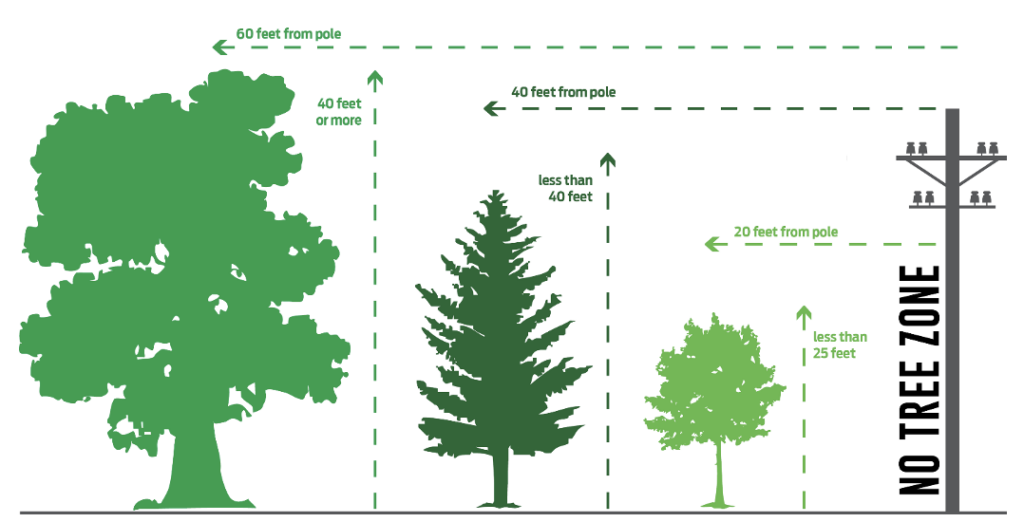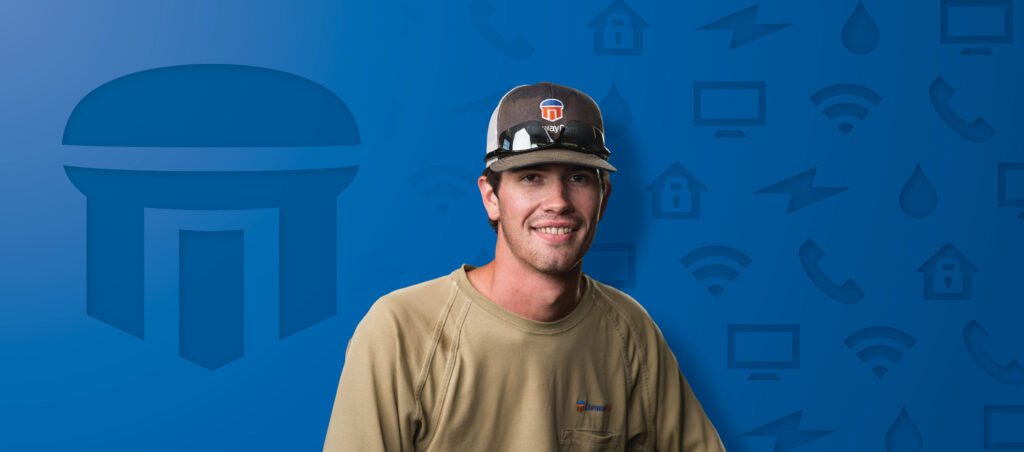A shade tree is nice to have a hot summer day, but tree limbs and power lines aren’t good neighbors – especially when storms bring lightning, high winds or ice. Limbs that touch or fall on power lines can cause power outages. That’s why it’s so important to plant the right trees in the right place.
Start with a plan
When selecting a tree or shrub to plant, it’s just as important to consider what you plant as it is where you plant. The right tree or shrub, planted in the right place, can give you years of beauty and value without the potential dangers of getting too close to power lines. Be aware of power lines in your area and consider the final height and width of the vegetation you’re planting when it’s fully grown.
Overhead Power Lines
To get power to homes and businesses, Conway Corp relies on overhead and underground distribution lines. Overhead utility lines are the easiest to see and probably the ones we take most for granted. Although these lines look harmless enough, they can be extremely dangerous. Planting tall growing trees under and near these lines will ultimately require pruning to maintain safe clearance from the wires. It’s important to know the maximum allowable height of the tree and the minimum distance you can plant from the pole to eliminate potential public safety hazards and reduce service problems from trees interfering with power lines.
There are four planting zones around distribution lines that are important to remember while choosing a tree and location:
No Tree Zone – Twenty feet on either side of the pole for distribution lines. No trees should be planted in this area.
Low Tree Zone – Twenty feet to 40 feet away from the pole. The maximum height at maturity of vegetation growing in this zone should be less than 25 feet tall.
Medium Tree Zone – Forty feet to 60 feet away from the pole. The maximum height at maturity of vegetation in this zone should be up to 40 feet tall.
Tall Tree Zone – Sixty feet and beyond from the pole. Vegetation taller than 40 feet at maturity should be planted in this zone.

Underground Power Lines
Trees are much more than just what you see overhead. Many times the root area is larger than the branch spread above ground. Large areas of Conway are served by underground power lines, and often tree roots and underground lines co-exist without problems. While trees planted near underground lines could have their roots damaged if the lines need to be dug up for repairs, the biggest danger to underground lines occurs during planting.
Before your shovel ever hits the dirt, make sure you are aware of the location of any underground utilities. To be certain you do not accidentally dig into any lines and risk serious injury or a costly service interruption, call 811 at least three days before you start so the locations of underground service lines can be marked. There is no charge for this service, and the one-call locator will mark all buried electric, gas, water, sewer, cable and telephone lines.
Never assume that these utility lines are buried deeper than you plan to dig because in some cases utility lines are very close to the surface. When you get ready to plant, stay at least 24 inches away from any marked lines and consider the length and depth of the roots of the mature tree.
While planting additional vegetation, keep padmount transformers into consideration. These rectangular green metal cabinets are ground-mounted transformers and have underground power lines approaching them from each and every direction. When planting trees or shrubs in their area, always maintain at least ten feet of clearance from each side to allow for repairs and maintenance.
Tree Trimming
To continue to provide nationally recognized safe and reliable electric service, Conway Corp must occasionally remove brush and trim trees along power lines. These practices are approved by arborists nationwide and allow us to maintain our power lines – before the trees and brush are close enough to cause outages – in a manner that is consistent with good arboricultural practices. In addition, it allows us to maintain the safest working environment possible for our linemen and tree workers by pruning limbs before they reach or come in close contact with energized wires.
Tree trimming around power lines is an extremely hazardous job and is part of our responsibility to ensure safe, reliable electric service to the Conway community. Residents should never attempt to trim trees around live power lines. If you see tree limbs touching power lines or have a question about a tree in your yard, call Conway Corp at 501-450-6000.



